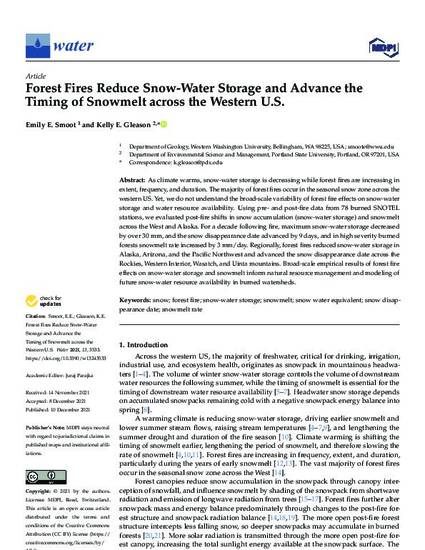
- Fire,
- Carbon sequestration,
- Forest management -- Environmental aspects,
- Wildfires -- West (U.S.) -- Effect of climatic changes on Snowmelt
As climate warms, snow-water storage is decreasing while forest fires are increasing in extent, frequency, and duration. The majority of forest fires occur in the seasonal snow zone across the western US. Yet, we do not understand the broad-scale variability of forest fire effects on snow-water storage and water resource availability. Using pre- and post-fire data from 78 burned SNOTEL stations, we evaluated post-fire shifts in snow accumulation (snow-water storage) and snowmelt across the West and Alaska. For a decade following fire, maximum snow-water storage decreased by over 30 mm, and the snow disappearance date advanced by 9 days, and in high severity burned forests snowmelt rate increased by 3 mm/day. Regionally, forest fires reduced snow-water storage in Alaska, Arizona, and the Pacific Northwest and advanced the snow disappearance date across the Rockies, Western Interior, Wasatch, and Uinta mountains. Broad-scale empirical results of forest fire effects on snow-water storage and snowmelt inform natural resource management and modeling of future snow-water resource availability in burned watersheds.
Copyright (c) 2021 The Authors
This work is licensed under a Creative Commons Attribution 4.0 International License.
